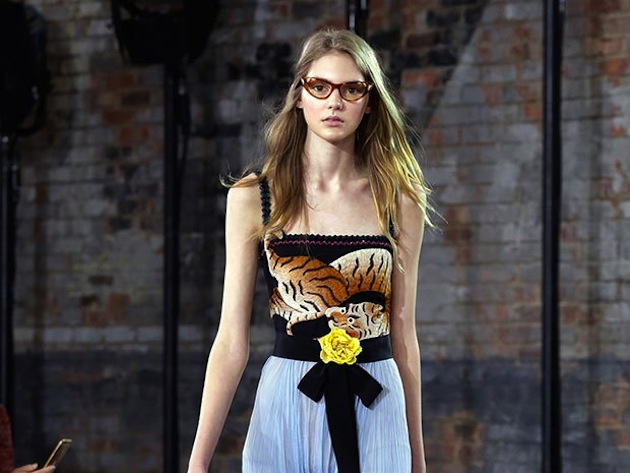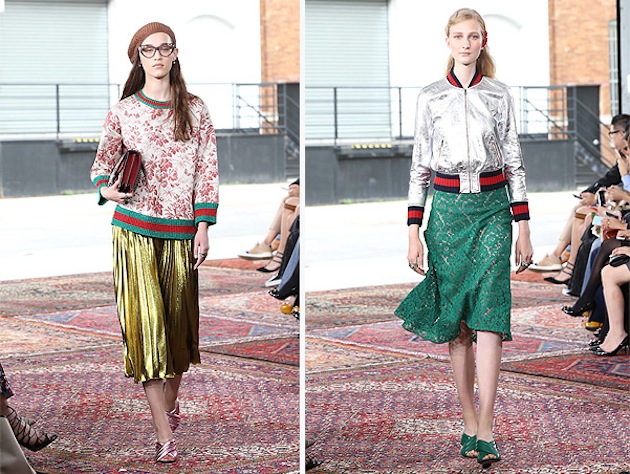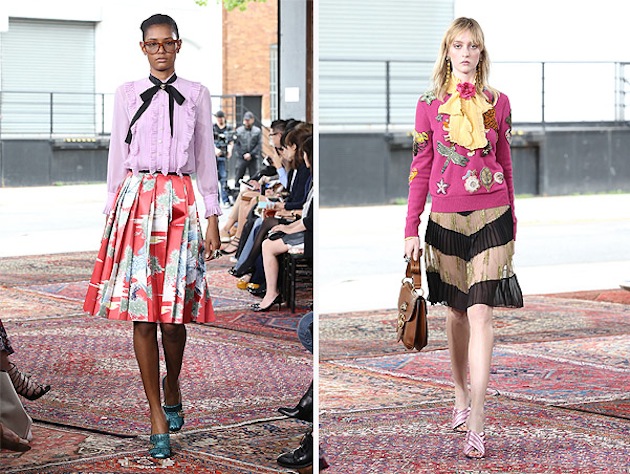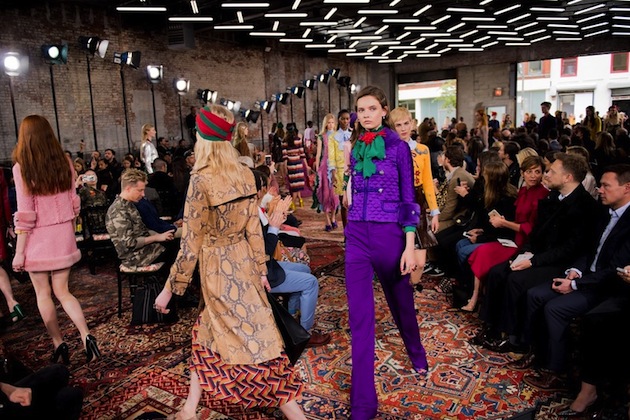
The Gucci girl imagined by the brand for their recently revealed resort collection for 2016, turned out to be completely different than the one conceived during the epoch of Frida Giannini. Alessandro Michele is continuing to do his very best to redefine what Gucci is. The looks sent down the runway in New York were not attempting to appear young, they actually were young, while at the same time appearing to be out of time – like those looks borrowed from a grandmother’s wardrobe that you always cherish and wear. Could this be a controversial turn for Gucci? Is re-inventing the brand almost from scratch a wise thing to do in fashion industry? Like in music, it is usually met with either delight or scorn. Reinventing one’s identity nevertheless often happens both in fashion and music, but the new is often a mixed with ideas drawn from the old archives. That is the case with Gucci’s resort collection; a collection with clear references to the ’70s make Michele’s inspiration quite apparent and approachable. This turn on Gucci runway might not, however, come as a big surprise, due to the fact that the decade that gave us flares and hippies has influenced most collections for both this Summer and Autumn.


Gucci’s collection has a clear vision, feels well thought-out and complete, but the most striking is it feels so wearable – an impression that further develops the idea of Gucci’s newfound youth and maybe also a possible attempt to add a new target group to its list of customers. The truth is, in fact, that this is the first Gucci collection in a while that speaks to the younger, Instagraming generation, a generation that aims to add value to what they wear on their own terms. Is this a model for luxury brands to expand their audience? Will offering wearable pieces that can easily be adapted to anyone’s style have an impact on how brands’ structure change? The ‘personal’ turn in fashion is already in its course, with an ever more growing list of collaborations, interpretations and variations added to each brand. The final question that is left to as is: how might this approach hollow our the basic logic of the market of luxury items, when the value that has always been defined by the final product is suddenly due to the customers to create.


